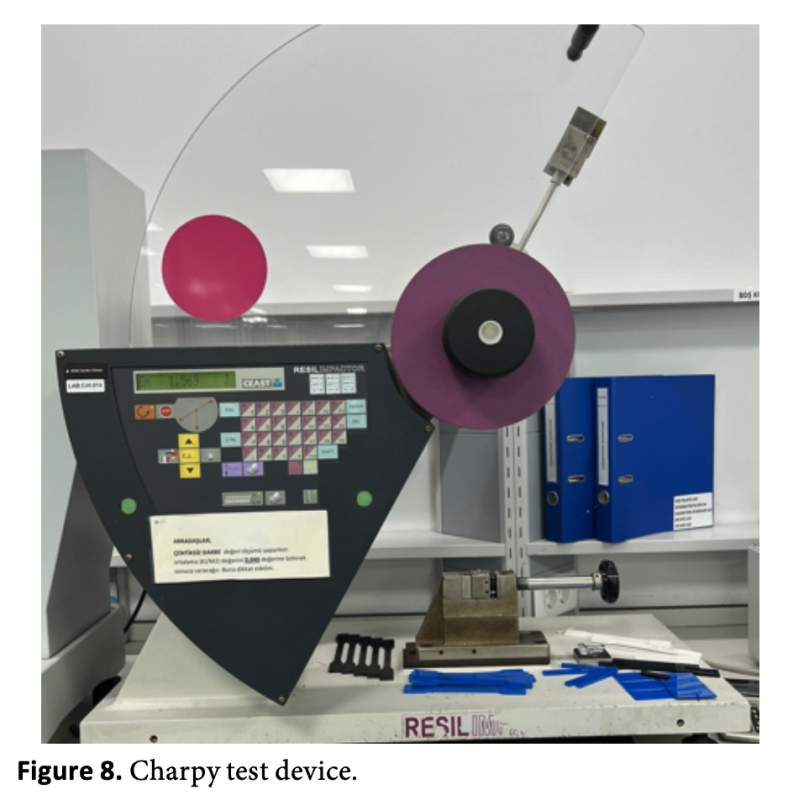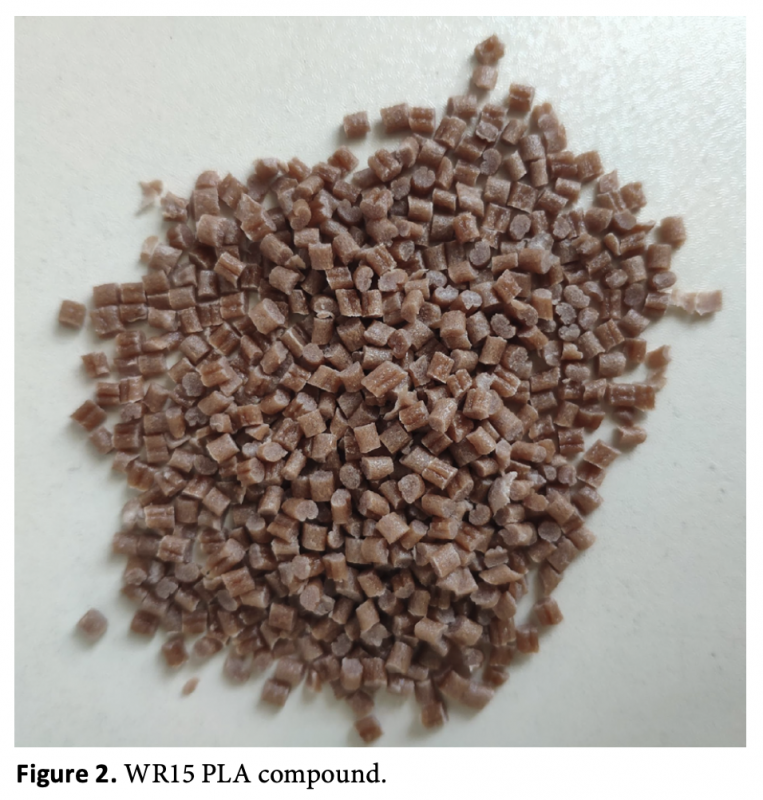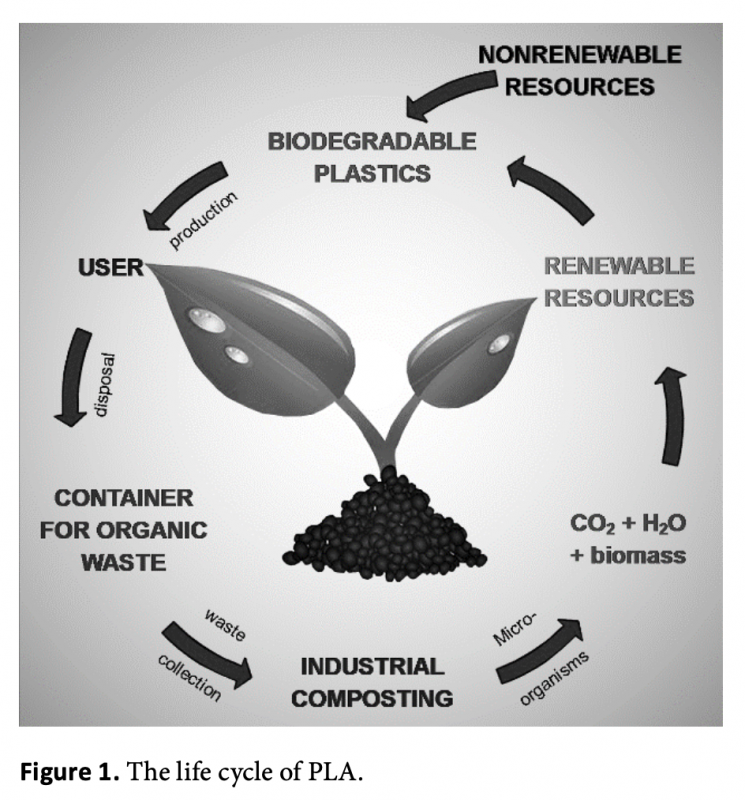The Fused Filament Fabrication (FFF) method is the most popular method preferred for shaping polymers with AM. FFF is known to have low cost and high printing speeds compared to other AM techniques. PLA material, which is a completely bio-based thermoplastic polymer with many desirable properties, including easy processing ability, strength, hardness, and biodegradability, is widely used in material processing by the FFF method. In this study, the PLA matrix was reinforced with natural fibers to increase the mechanical properties and contribute to recycling. Bio-composite compounds with 15 wt.% wood fiber reinforced PLA matrix was prepared using a twin-screw extruder. Test specimens were produced the FFF method and injection molding method. Thermal analysis of the prepared compounds, filaments, and produced specimens was carried out. A decrease in the Tg value of the compound reinforced with natural fiber was observed, while an increase in the Tm value was observed. The Tg value of the specimens produced by the FFF method increased compared to the injection specimens. It was determined that the stress at break values of the specimens produced by injection were 2 times higher than the specimens produced by FFF. The impact strength of the specimens produced with injection molding is 51.75% higher than the specimens produced with FFF. The bio-composite materials produced in the study were examined under scanning electron microscopy (SEM). Surface interactions and homogeneous fiber distribution between matrix and fiber were investigated.
Polimerlerin eklemeli imalat (Eİ) ile şekillendirilmesinde tercih edilen en popüler yöntem ise erimiş filament ekstrüzyonu (EFE) yöntemidir. EFE, diğer 3D baskı tekniklerine kıyasla düşük maliyetli ve yüksek baskı hızlarına sahip olduğu bilinmektedir. Kolay işleme kabiliyeti, mukavemeti, sertliği ve biyolojik olarak bozunabilirliği dahil olmak üzere birçok arzu edilen özelliğe sahip tamamen biyo-bazlı bir termoplastik polimer olan PLA malzemesi EFE yöntemi ile malzeme işlemede yaygın olarak kullanılır. Bu çalışmada mekanik özellikleri arttırmak ve geri dönüşüme katkı sağlamak amacıyla PLA matris doğal fiberler ile güçlendirilmiştir. Ağırlıkça %15 ahşap fiber takviyeli PLA matrisli biyo kompozit bileşimler hazırlanmıştır. Test numuneleri EFE yöntemi ve enjeksiyon kalıplama yöntemleri kullanılarak üretilmiştir. Hazırlanan bileşimlerin, filamentlerin ve üretilen numunelerin termal analizleri gerçekleştirilmiştir. Doğal fiber ile güçlendirilen bileşimlerin Tg değerinde azalma Tm değerinde ise artış gözlemlenmiştir. EFE yöntemi ile üretilen numunelerin Tg değeri ise enjeksiyon numunelere göre artmıştır. Enjeksiyon ile üretilen numunelerin kopma gerilmesi değerlerinin EFE ile üretilen numunelere göre 2 kat yüksek olduğu belirlenmiştir. Enjeksiyon kalıplama ile üretilen numunelerin darbe dayanımları ise EFE ile üretilen numunelere göre %51,75 daha yüksektir. Çalışmada üretilen biyo-kompozit malzemeler taramalı elektron mikroskobu (SEM) altında incelenmiştir. Matris ve lif arasındaki yüzey etkileşimleri ve homojen lif dağılımı incelenmiştir.




Download Article in PDF (3.2 MB)